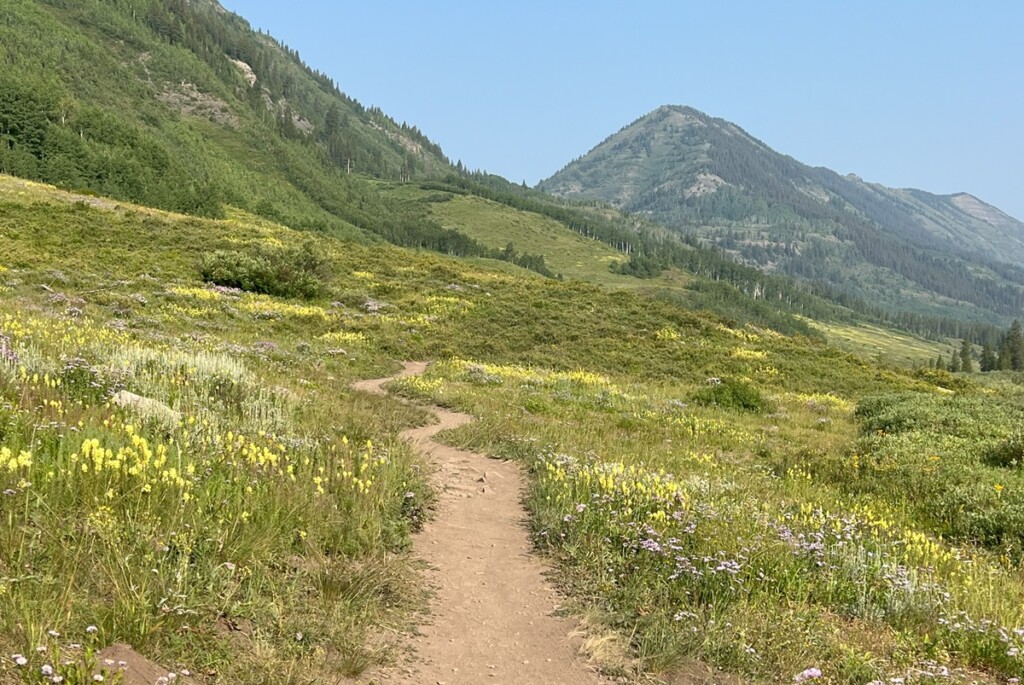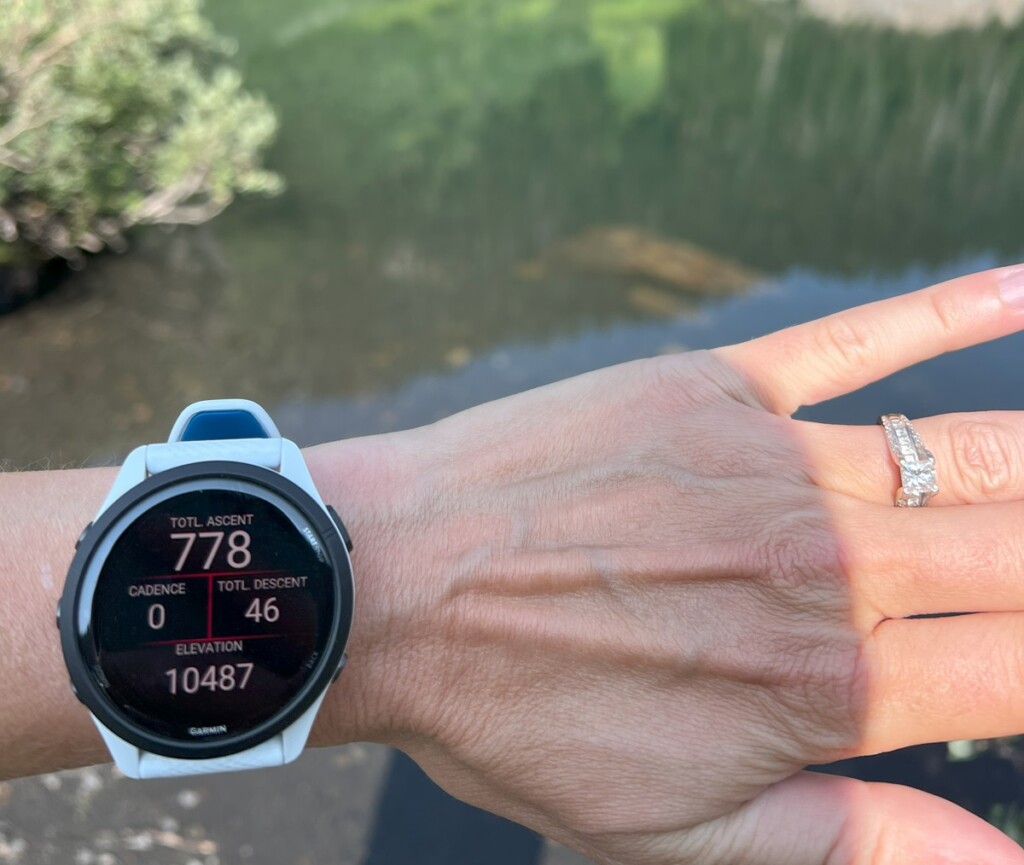Hills are hard. And guess what, that’s exactly why there are so many benefits to running hills. In case, you’re struggling to find the motivation to make them part of your routine let’s give you a little boost. Particularly for those training in places like Florida, I know that hills are in short supply. But if you travel for any races you’re going to encounter them and even throwing a few bridges in to your routine each week is going to pay off massively.
Particularly for those training in places like Florida, I know that hills are in short supply. But if you travel for any races you’re going to encounter them and even throwing a few bridges in to your routine each week is going to pay off massively.
Want to get faster? Become more injury proof? Improve your stride.
I think you know what I’m going to say next….run uphill. And no, you don’t need to live somewhere hilly with trails like Colorado (basically I can’t avoid hills). The consistent variation even if small will add up, but don’t be afraid to seek out some of the bigger hills too.
Benefits of Uphill Running
Running uphill benefits are massive and sometimes surprising, so let’s recap them along with how to run them properly and how to add hill workouts to your training plan to get the maximum benefit!
Running hills tips for everyone! Doesn’t matter whether you’re training for a 5K or marathon, hills are an important part of the process. And they work for everyone from beginners to experienced runners.
Here are just a few of the reasons that every running coach will put some incline training in your plan and why some of the fastest runners you know make them a regular part of training.
#1 Uphill Runs are Strength Workouts
Hill workouts are a form of resistance training and one of the most effective for runners. It’s training specificity which means we’re building strength for the exact thing that we want to better at!
Hills are one of the first hard workouts we assign to runners for this reason. The increased intensity will force your glutes, hamstrings, calves and core to work harder. This means muscles are being broken down to rebuild with more strength and power.
#2 Running Hills Improves Speed
Uphill running intervals use the same muscles that we would for track workouts. It’s basically a speed workout in disguise. The benefit of starting with hills is that you are less likely to create an injury because you can’t overstride, which we see a lot when folks first start with fast track workouts.
During uphills your muscles learn to contract with more force and power. Once you get to flat surface not only does it feel easier, but that new found strength and power allows you to run faster in speedwork and races.
Listen I did an entire article on running hill sprints to share all the studies that prove it works in as little as 6 weeks.
#3 Running Uphill Increases our VO2 Max
Additionally, there are a number of studies showing that including hill sprint workouts increases our VO2 Max. While this is a number on your watch that’s often deceiving, in a real world test it can give us some interesting data.
Your VO2 Max is a way to describe the ability to utilize oxygen. More efficient oxygen flowing to your muscles allows you sustain harder efforts for a longer period of time.

#4 Uphill Runs Improve Cardiovascular Fitness for Endurance
There’s a reason you often want to avoid hills on your route, it’s harder than running on flat ground! Which is exactly why we include them in our training, so that we can continually challenge our system.
It’s the same reason you don’t want to lift the same weights over an over. If your goal is to improve your endurance then we want to work your system in different ways.
An unexpected benefit is that you’ll be switching up which muscles are being primarily used and this can indeed make it easier to run farther!
While living in Miami, I began to realize that running super long on flat ground meant the same muscles had to fire in the same pattern for the duration of the run which lead to much faster fatigue than having some variation.
You begin to fatigue less as you improve muscle elasticity.
#5 Hills Improve Running Form
One of my favorite benefits of hills is that it’s impossible to overstride running uphill. Due to the slope you’re slightly leaning forward (a huge goal is learning to lean from the ankles and here it’s happening naturally)
Additionally, it’s impossible for your stride length to be too big. Instead, you’ll be taking shorter and faster steps, which means improving your cadence.
This means you are practicing driving your knee up and the lean without even knowing it. Shorter strides both up and down ensure you land mid-foot.
Additionally, the strength you’re building in your quadriceps will make it easier on every surface to pick up your knees. Driving them in front of you rather than back for good form.
The super steep hills that Killian runs are an exaggeration, but give you an idea of what I mean by forcing good form.

#6 Uphill Runs Teach Us to Run on Effort
If you’re super tied to the pace on your watch, then uphill running is going to be extremely frustrating. But if you use that time instead to start tapping in to how to run by perceived effort, you’ll end up a much better racer.
While the ideal race day scenario is an even pace from start to finish, that doesn’t apply to hilly races like NYC or Boston. Instead, you need to focus on finding a consistent effort level.
That allows you to run faster on the flats and downhills, while having enough energy to hit the hills.Now let’s talk about running hills the right way to ensure they really are injury prevention, not creation.
#7 Running Uphill Improves Your Running Economy
According to studies published in the International Journal of Sports Physiology and Performance, running uphill can increase your cardiovascular capacity and aerobic energy production, which will improve your running economy and help you become a more effective runner.
If you have a stronger running economy, you will be able to run for longer distances and faster before becoming fatigued.
#8 Running Hills Reduces Risk of Injury
There are a number of specific reasons that uphill running can reduce injuries. We already covered the strength building and the better running form, but a few more reasons.
- Joints are more protected due to the shorter distance to ground contact
- The slight forward lean from the ankles can help offset shin splints
- Stronger muscles are more fatigue resistant which means better able to hold you in good alignment
#9 Uphill Running Burns More Calories
Let’s be honest I love that hills burn more calories too because one of my favorite things about running…is eating.
So if you’re currently injured and mostly walking or hiking, awesome put it on an incline. You’ll be both increasing your muscle, strength and calorie burn. All of that is going to lead to an easy return to running.
I wouldn’t look at hill running as a way to burn fat. It can obviously be designed as a high intensity workout, but overall we’re focused on a strong healthy body that can go for years and years.
#10 Uphill Running Leads to Epic Views
One of the things that keeps me going on long trail runs is wondering what I’ll see from the top! It’s that birds eye view giving you a peak out over the area you’ve covered.
Not only is it gorgeous, but there’s a sense of real accomplishment in that moment.

#11 Hilly Runs Mean Downhills
Colorado trail running means that most runs will start uphill. I used to really bemoan this until I realized that it meant my run back was downhill! WOHOOO.
While I may not love a steep decline, a 1-3% gradient is pure pleasure. You can let your legs fly, while your HR remains lower. It’s such a powerful way to finish a run feeling like you could just keep going.
And because you started the run with a hard effort the finished fast, it’s a massive training stimulus on multiple levels.
Reminder that running downhill also requires some smart form, folks doing big downhill races will tell you it can absolutely trash the quads and thus the knees.
#12 Uphill Runs Can Increase Your Turnover
Running cadence can also be thought of in terms of turnover, which is the rate at which each of your foot lands when you run. When running uphill, you need to shorten your stride and increase the speed of your steps.
Your running cadence is one of the two determining factors that influence how fast you can run, and running uphill can help you improve it. The other factor is your stride length.
Unlike stride length, which has been shown to increase injury risk, studies prove that running cadence increases speed and minimizes injury risk.
All right, did any of these benefits of running hills get you excited? Make you think it’s time to plan some new routes?
I’d challenge you to look at your vertical for recent runs and see if you can slightly increase it over the coming months!
Looking for more training tips?
- How to Start Trail Running?
- Best Trail Running shoes
- Hill Running Workouts
Other ways to connect with Amanda
Instagram Daily Fun: RunToTheFinish
Facebook Community Chatter: RunToTheFinish
Sign Up to Receive a Weekly Newsletter with Top Running Tips



 How to Run Uphill | Maximize Your Run Efficiency
How to Run Uphill | Maximize Your Run Efficiency
